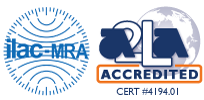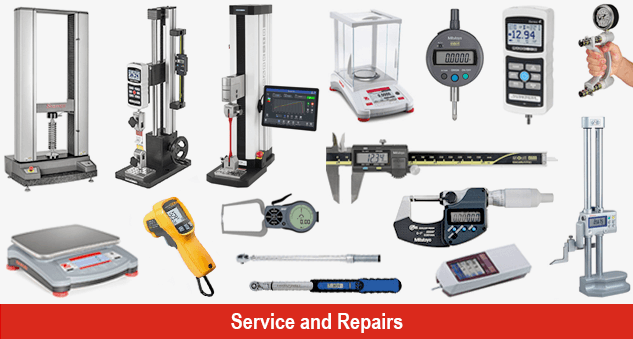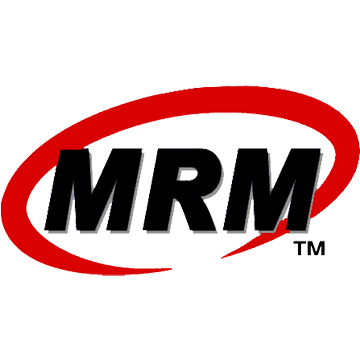
The Complete Guide to Torque Wrenches: Precision Tightening for Professional Applications
When precision matters most in fastening applications, a torque wrench becomes an indispensable tool. Whether you're working in automotive manufacturing and repairs, aerospace manufacturing, or industrial maintenance, understanding torque wrenches and their proper application can mean the difference between reliable performance and catastrophic failure.
What is a Torque Wrench?
A torque wrench is a specialized tool designed to apply a specific amount of rotational force (torque) to fasteners such as bolts and nuts. Unlike standard wrenches that rely on the operator's feel and experience, torque wrenches provide precise, measurable control over the tightening force applied to threaded fasteners.
The fundamental principle behind torque wrench operation is the controlled application of rotational force measured in units such as foot pounds (ft.lbf), Newton meters (N.m), or inch pounds (in.lbf). This precision ensures that fasteners are neither under-tightened, which could lead to loosening and failure, nor over-tightened, which could result in thread stripping or component damage.
Types of Torque Wrenches
Click-Type Torque Wrenches
Click-type torque wrenches are among the most popular and widely used precision tools in professional settings. These wrenches feature an internal mechanism that produces an audible "click" and tactile feedback when the preset torque value is reached. The operator sets the desired torque value using an adjustable handle or dial, and the wrench signals when that precise measurement has been achieved.
The advantage of click-type torque wrenches lies in their reliability and ease of use. They provide clear indication when the target torque is reached, reducing the risk of over-tightening. Many professional mechanics and technicians prefer click-type models because they combine accuracy with user-friendly operation.
Dial-Type Torque Wrenches
Dial-type torque wrenches combine mechanical reliability with visual feedback through an analog dial display. These tools provide continuous torque reading throughout the tightening process, allowing operators to monitor the gradual increase in applied force.
The visual feedback from dial-type models makes them particularly useful for applications where precise torque application rates are important or when training new operators on proper tightening techniques.
Electronic Digital Torque Wrenches
Electronic torque wrenches represent the latest advancement in precision torque measurement technology. These sophisticated tools feature digital displays that show real-time torque values, often with additional features such as data logging, multiple unit conversions, and programmable torque settings.
Digital torque wrenches excel in applications requiring documentation and traceability. Many models can store torque readings, connect to computers for data transfer, and provide detailed records of each tightening operation. This capability makes them invaluable in quality control environments and applications requiring compliance with strict documentation standards.
Beam-Type Torque Wrenches
Beam-type torque wrenches utilize a simpler mechanical approach, featuring a calibrated scale and pointer that indicates the applied torque. As force is applied to the handle, the beam deflects proportionally, moving the pointer across the scale to show the current torque value.
While less sophisticated than electronic models, beam-type torque wrenches offer excellent reliability and require minimal maintenance. They don't rely on internal mechanisms that can wear out or require recalibration as frequently as click-type models.
Key Applications of Torque Wrenches
Automotive Industry
In automotive applications, torque wrenches are essential for wheel lug nuts, engine components, suspension parts, and critical safety systems. Proper torque specifications ensure wheel security, prevent warped brake rotors, and maintain the integrity of engine gaskets and seals. Under-tightened lug nuts can lead to wheel detachment, while over-tightened fasteners can strip threads or damage components.
Modern vehicles rely heavily on precise torque specifications throughout their construction. From delicate electronic component mounting to heavy-duty drivetrain assemblies, torque wrenches ensure that each fastener meets manufacturer specifications for optimal performance and safety.
Aerospace Manufacturing
The aerospace industry demands the highest levels of precision and reliability in fastener applications. Torque wrenches play a critical role in aircraft assembly, engine maintenance and component installation. The extreme operating conditions and safety requirements in aerospace applications make proper torque control absolutely essential.
Aircraft maintenance procedures typically specify exact torque values for every critical fastener, with detailed documentation requirements and regular calibration verification. The consequences of improper torque application in aerospace can be catastrophic, making precision torque tools indispensable.
Industrial Manufacturing
Manufacturing facilities across various industries rely on torque wrenches for equipment assembly, maintenance, and quality control. From machinery installation to production line equipment maintenance, proper torque application ensures reliable operation and extends equipment life.
Industrial applications often involve high-volume repetitive operations where consistency and efficiency are paramount. Torque wrenches help maintain uniform quality while reducing operator fatigue and improving productivity.
Construction and Infrastructure
Construction projects require torque wrenches for structural steel connections, heavy equipment assembly, and critical infrastructure installations. Bridge construction, building frameworks, and industrial facility construction all depend on properly torqued fasteners for structural integrity and safety.
The long-term reliability of constructed infrastructure depends heavily on proper initial assembly, making torque wrenches essential tools for construction professionals working on critical projects.
Factors to Consider When Selecting a Torque Wrench
Torque Range Requirements
Selecting the appropriate torque range is crucial for effective torque wrench performance. The ideal torque wrench should cover the range of torque values you'll encounter in your specific applications, with the working torque falling within the middle 20-80% of the tool's total range for optimal accuracy.
Using a torque wrench near its maximum or minimum capacity can reduce accuracy and accelerate wear. Professional users often maintain multiple torque wrenches with different ranges to ensure optimal performance across all applications.
Accuracy Specifications
Torque wrench accuracy is typically expressed as a percentage of the reading, such as ±3% or ±4%. Higher precision applications may require torque wrenches with tighter accuracy specifications, while general-purpose applications may accept slightly broader tolerances.
Understanding your accuracy requirements helps balance tool cost with performance needs. Critical applications may justify the investment in high-precision instruments, while routine maintenance tasks may be adequately served by standard accuracy tools.
Drive Size and Socket Compatibility
Torque wrenches are available in various drive sizes, including 1/4", 3/8", 1/2", 3/4", and 1" square drives. The drive size determines socket compatibility and influences the torque range and application suitability of the tool.
Smaller drive sizes (1/4" and 3/8") are typically used for lower torque applications and provide better access in confined spaces. Larger drive sizes (3/4" and 1") handle higher torque values and heavy-duty applications but may be less maneuverable in tight spaces.
Environmental Considerations
Working environments significantly impact torque wrench selection and performance. Corrosive atmospheres, extreme temperatures, and harsh operating conditions require specialized tools designed to withstand these challenges.
Marine environments, chemical processing facilities, and outdoor construction sites may require torque wrenches with special coatings, seals, or materials to ensure reliable long-term performance.
Proper Torque Wrench Operation and Techniques
Pre-Use Inspection and Preparation
Before using any torque wrench, conduct a thorough visual inspection to identify any signs of damage, wear, or contamination. Check the adjustment mechanism, ensure smooth operation, and verify that all components are properly secured.
Proper preparation also includes selecting the appropriate socket or attachment, ensuring clean threads on both the fastener and the component, and confirming the correct torque specification for the application.
Setting and Adjusting Torque Values
Accurate torque setting is fundamental to proper torque wrench operation. For adjustable models, set the desired torque value according to the manufacturer's instructions, ensuring the adjustment is made smoothly without forcing or over-adjusting the mechanism.
Many torque wrenches feature locking mechanisms to prevent accidental adjustment during use. Engage these locks after setting the desired torque to maintain consistent readings throughout the operation.
Application Technique and Best Practices
Proper torque application technique significantly impacts accuracy and repeatability. Apply force smoothly and steadily, avoiding sudden jerking motions that can affect readings or damage the tool mechanism. Position yourself to pull the wrench handle rather than pushing when possible, as this provides better control and reduces the risk of over-torquing.
Maintain the torque wrench perpendicular to the fastener axis and apply force at the handle's designated grip area. Using extensions or adapters can affect torque readings and should be accounted for in the final torque calculation.
Post-Use Procedures
After completing torque operations, return adjustable torque wrenches to their lowest setting to relieve spring tension and preserve calibration accuracy. Clean the tool according to manufacturer recommendations and store it in a protective case or designated location.
Document any irregularities observed during use and schedule regular calibration verification to maintain measurement accuracy and traceability.
Calibration and Maintenance of Torque Wrenches
Understanding Calibration Requirements
Torque wrench calibration ensures measurement accuracy and traceability to national standards. Professional applications typically require calibration at regular intervals, often annually or after a specified number of uses, depending on the application criticality and manufacturer recommendations.
Calibration involves comparing the torque wrench's readings against certified reference standards and making necessary adjustments to maintain accuracy within specified tolerances. Proper calibration documentation provides traceability and supports quality management system requirements.
Signs That Calibration is Needed
Several indicators suggest that a torque wrench may need calibration or service. These include inconsistent readings, failure to click or signal at the set torque (in the case of click-type models), visible damage to the adjustment mechanism, or readings that seem inconsistent with expected values.
Any torque wrench that has been dropped, subjected to impact, or used beyond its capacity should be recalibrated before further use. Regular users often establish schedules based on usage frequency and application criticality.
Preventive Maintenance Practices
Regular maintenance extends torque wrench life and maintains accuracy between calibrations. This includes keeping the tool clean and dry, protecting it from impact and extreme temperatures, and following manufacturer storage recommendations.
Lubrication of moving parts according to manufacturer specifications helps ensure smooth operation and prevents premature wear. However, avoid over-lubrication, which can affect accuracy and attract contaminants.
Professional Calibration Services
Professional calibration services provide traceable accuracy verification using certified reference standards. These services typically include adjustment, documentation, and certification that meets industry and regulatory requirements.
When selecting calibration services, verify their accreditation status, turnaround times, and documentation practices to ensure they meet your specific requirements and quality standards.
Common Mistakes and How to Avoid Them
Over-Tightening and Under-Tightening
Over-tightening fasteners can strip threads, crack components, or create excessive stress concentrations that lead to premature failure. Under-tightening allows fasteners to loosen over time, potentially causing safety hazards or equipment failure.
Understanding the consequences of improper torque helps emphasize the importance of following specifications and using properly calibrated tools. When in doubt, consult manufacturer specifications or engineering requirements rather than estimating appropriate torque values.
Improper Tool Storage and Handling
Dropping or mishandling torque wrenches can affect their calibration and accuracy. Store tools in protective cases, avoid using them as hammers or pry bars, and handle them with the same care given to other precision instruments.
Temperature extremes and humid environments can also affect torque wrench performance. Store tools in clean, dry environments when possible, and allow them to acclimate to working temperatures before use.
Neglecting Calibration Schedules
Skipping regular calibration can lead to inaccurate torque applications and potential safety hazards. Establish calibration schedules based on usage frequency, application criticality, and manufacturer recommendations.
Maintain calibration records to track tool performance over time and identify trends that might indicate the need for more frequent calibration or tool replacement.
Conclusion
Torque wrenches are essential precision tools that ensure the reliable and safe assembly of critical fasteners across numerous industries. Understanding the different types available, their proper application, and maintenance requirements enables users to select and operate these tools effectively.
The investment in quality torque wrenches and proper training pays dividends through improved reliability, reduced warranty claims, and enhanced safety performance. Whether you're working in automotive manufacturing and repairs, aerospace manufacturing, or industrial maintenance, the proper use of torque wrenches contributes significantly to professional results and operational safety.
By following proper selection criteria, operation techniques, and maintenance practices, torque wrenches provide years of reliable service while maintaining the accuracy necessary for critical applications. The key to success lies in understanding your specific requirements, selecting appropriate tools, and maintaining them according to professional standards.
For applications requiring the highest levels of precision and reliability, investing in quality torque measurement tools and supporting them with proper calibration and maintenance programs ensures optimal performance and long-term value.
Contact MRM Metrology Inc
Phone: 905-595-1000
Email: [email protected]
Website: MRMmetrology.com
Serving: Ontario, Canada and surrounding areas











































